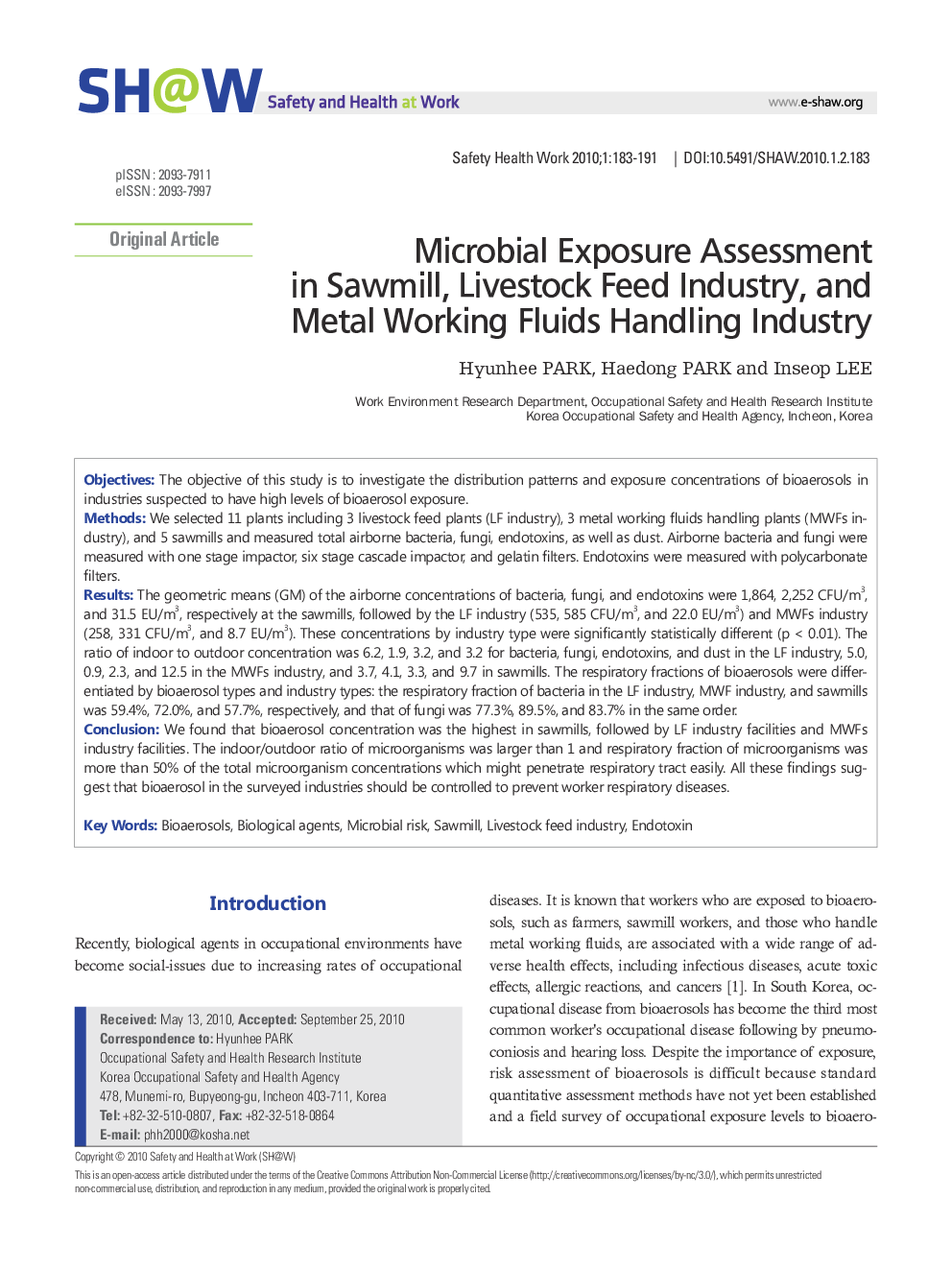| کد مقاله | کد نشریه | سال انتشار | مقاله انگلیسی | نسخه تمام متن |
|---|---|---|---|---|
| 1092181 | 952240 | 2010 | 9 صفحه PDF | دانلود رایگان |

Objectives: The objective of this study is to investigate the distribution patterns and exposure concentrations of bioaerosols in industries suspected to have high levels of bioaerosol exposure.Methods: We selected 11 plants including 3 livestock feed plants (LF industry), 3 metal working fluids handling plants (MWFs industry), and 5 sawmills and measured total airborne bacteria, fungi, endotoxins, as well as dust. Airborne bacteria and fungi were measured with one stage impactor, six stage cascade impactor, and gelatin filters. Endotoxins were measured with polycarbonate filters.Results: The geometric means (GM) of the airborne concentrations of bacteria, fungi, and endotoxins were 1,864, 2,252 CFU/m3, and 31.5 EU/m3, respectively at the sawmills, followed by the LF industry (535, 585 CFU/m3, and 22.0 EU/m3) and MWFs industry (258, 331 CFU/m3, and 8.7 EU/m3). These concentrations by industry type were significantly statistically different (p < 0.01). The ratio of indoor to outdoor concentration was 6.2, 1.9, 3.2, and 3.2 for bacteria, fungi, endotoxins, and dust in the LF industry, 5.0, 0.9, 2.3, and 12.5 in the MWFs industry, and 3.7, 4.1, 3.3, and 9.7 in sawmills. The respiratory fractions of bioaerosols were differentiated by bioaerosol types and industry types: the respiratory fraction of bacteria in the LF industry, MWF industry, and sawmills was 59.4%, 72.0%, and 57.7%, respectively, and that of fungi was 77.3%, 89.5%, and 83.7% in the same order.Conclusion: We found that bioaerosol concentration was the highest in sawmills, followed by LF industry facilities and MWFs industry facilities. The indoor/outdoor ratio of microorganisms was larger than 1 and respiratory fraction of microorganisms was more than 50% of the total microorganism concentrations which might penetrate respiratory tract easily. All these findings suggest that bioaerosol in the surveyed industries should be controlled to prevent worker respiratory diseases.
Journal: Safety and Health at Work - Volume 1, Issue 2, December 2010, Pages 183–191